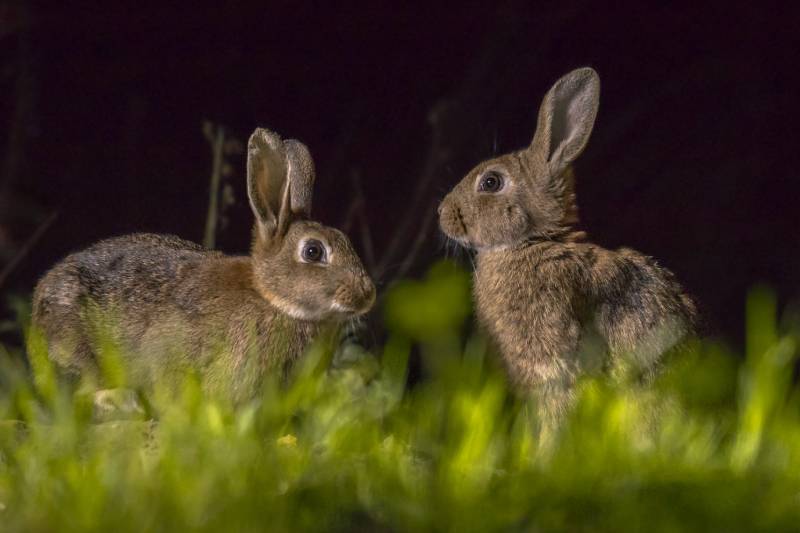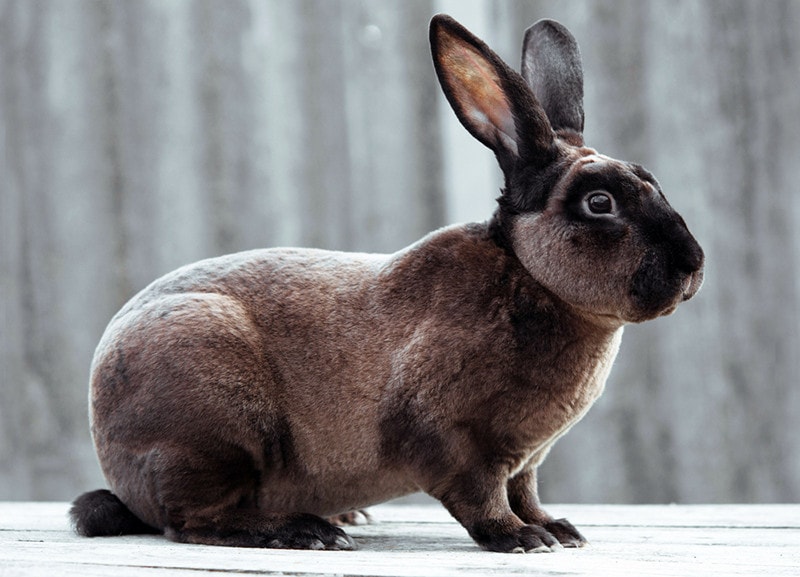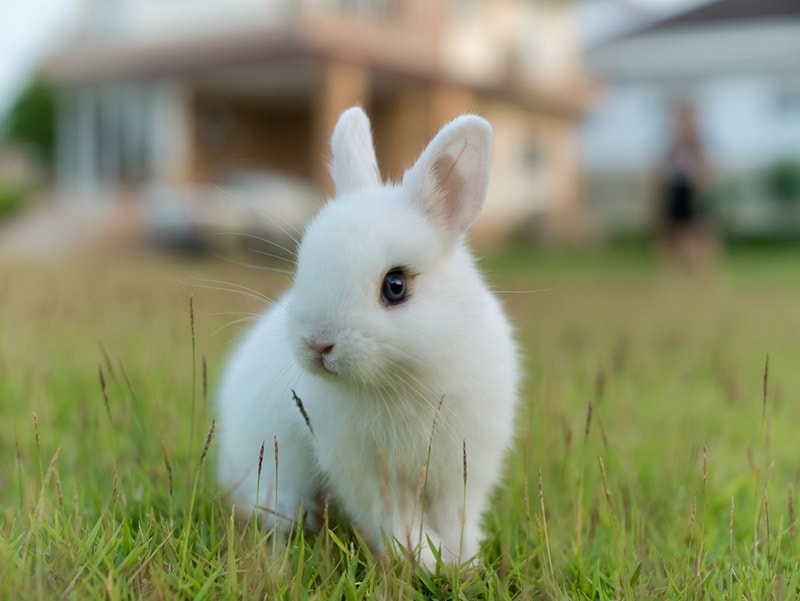Where Do Rabbits Like to Be Pet: 5 Ideal Vet Approved Spots (With Infographic)
Updated on
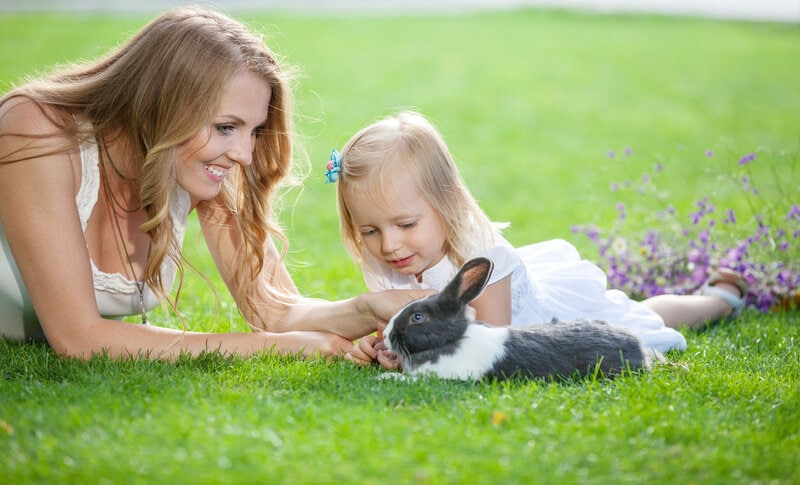
Depending on their personality, rabbits can be easier or more challenging to connect with, but a good place to start is petting them where you know they’d love it! Most rabbits have places they love to be petted and places they wish you wouldn’t touch. Many factors determine where a bunny will let you touch it. They have varying personalities, making some friendlier than others.
How the animal was raised is another thing to consider. Rabbits that were handled when young are more likely to let you touch them than others without this early socialization. Suffice it to say there are good and bad places that may also apply to other pets.
In this article, we’re looking at five ideal places to pet your rabbit, with a helpful infographic to show you what we mean. We’ve also included places where you should definitely not pet your rabbit unless you’re looking for some retaliation!
Before You Begin: Get the Right Approach

Before you start to pet your rabbit, it’s important to remember that rabbits are prey animals.1 Unlike cats and dogs, rabbits can get easily startled, particularly by things that are coming towards them from above (since many of their natural predators are birds).
You want to ensure your rabbit can see your hands approaching them, which means you need to hold your hand in front of them but off to one side.
Rabbits cannot see the spot directly in front of their nose, meaning that if you come at them from behind, directly above, or straight in front of them, they might not be able to see your hand and get frightened. Giving them your hand slowly from one side can help them know what’s coming, and allowing them to sniff your hand gently before petting will help put everyone at ease.
An important thing to always consider is that as much as children love to pet rabbits, you should always supervise them while they’re doing so. Teach them how to treat your rabbit safely and gently in a way they will enjoy so they can both benefit from the relationship. Otherwise, your rabbit might suffer from stress or injuries from improper handling or might even bite your child.
Another question you may have is how long to pet your rabbit. Well, this will mainly depend on your rabbit. Some will enjoy it for just a few minutes at a time and then will go on doing their own thing, while others may hop over to you, bowing their head or nudging you to indicate they’d like some attention. Always be gentle and take slow, gradual steps when petting your rabbit, while also keeping an eye on their body language. On the other hand, some rabbits dislike physical contact, and you should respect this at all times.
The 5 Spots Where Rabbits Like to Be Pet

1. Ears
Healthy rabbit ears aren’t very sensitive to touch, so they’re mostly a neutral place to pet. However, they’re incredibly sensitive to sound; those big ears will pick up the slightest rustle or movement. Remember to be gentle when petting your rabbit’s ears as their skin is quite fragile.
Rabbits’ ears contain a complex web of little blood vessels that play a crucial role in regulating body temperature. Using these, rabbits radiate heat from their ears when they get hot, as they cannot sweat. Rough handling can easily cause ear injuries. Petting your rabbit’s ears by gently stroking them back and stopping before you reach their shoulders can be a very pleasurable experience for your rabbit. Make sure you keep an eye on their body language to see if they’re relaxing or getting stressed. If they’re showing signs of stress, such as tensing or moving away, stop petting them and try again another time.

2. Nose
Another place to pet your rabbit is by gently stroking from their forehead down to their nose. Rabbits generally enjoy this feeling, and most of them find being petted in this small area comforting. Again, remember to be gentle and only use a few fingers when stroking this area. You can give your rabbit some gentle scratches here; they can even close their eyes in contentment if you’re doing it just right! The nose is sensitive; even one finger gently stroking the nose could be just the right amount.
Some rabbits find this very comforting. Again, monitor for any signs of stress or discomfort, and allow the rabbit to walk away if they’re not enjoying it.
3. Forehead
Most rabbits thoroughly enjoy being stroked on their forehead by people they’re comfortable with, as it’s a “safe zone” for them. The forehead is also a very easy place to reach when approaching your rabbit from slightly above and to the side.
Make sure your bunny sees you coming. They have a blind spot directly in front of their head, so always approach them from the side and never from above. You should also move slowly to avoid startling them. Animals vary in how long they’ll let you continue.
Watch your rabbit for signs that they’re not enjoying themselves, such as moving away or tensing. If they do this, it’s best to stop petting them and let them calm down. This might not be an area they enjoy being petted, or maybe they just prefer a very short petting session. Either way, always respect their preferences. If your rabbit is enjoying being pet by you, they might even bump or nudge you with their nose to get you to continue.
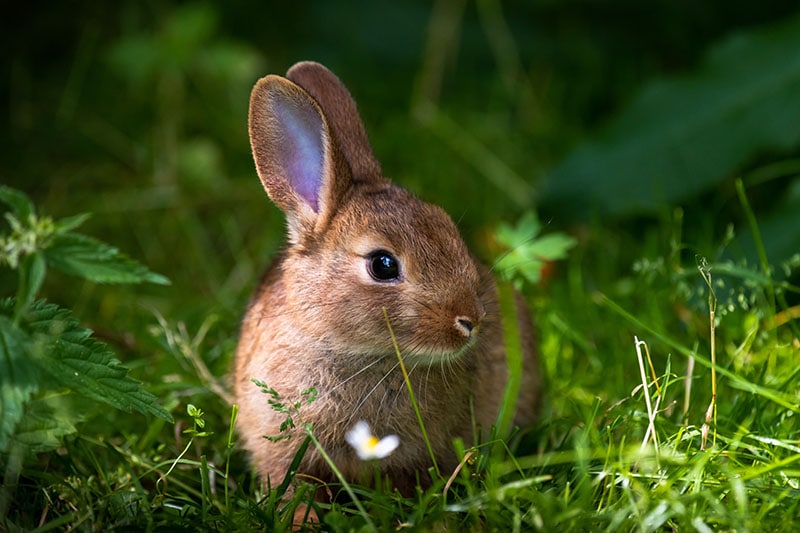
4. Cheeks
Some rabbits won’t like being petted on their cheeks, but many do. Try stroking your rabbit slowly from their forehead down to their cheeks. If your rabbit is startled by this, stop trying and let them relax. After a while, you can gently go back to the forehead and try to pet their cheeks again more slowly. Most rabbits will (in time) learn to love getting their cheeks stroked, and it can be part of a broader body massage that can help you and your rabbit bond. But if they dislike it, it will be an area to avoid.
Another good reason to pet your rabbit’s cheeks is that it allows you to check them for any problems with their teeth, such as abscesses. Many animals are less tolerant of touching their chins. However, it will make it easier for you and your vet to check your bunny’s teeth if they’re already used to your hand on their face.
If you notice your rabbit uncharacteristically flinching when you stroke their cheeks, feel any lump, bump, or nodule, or notice any discharge or bad smell, take them to their vet as soon as possible.
5. Down Their Back
Similarly to having their cheeks stroked, some rabbits don’t like their back being stroked. To pet your rabbit’s back, start by gently petting your rabbit’s ears and moving directly behind them on the back of their neck. Then, gently stroke them down their back in one fluid movement. Your rabbit may be surprised, but it’s okay to continue only if they’re not exhibiting signs of stress.
If they start to fidget and back away, stop and try another time. Some rabbits may enjoy it, and you can try petting them all the way down their backs. Be gentle and go slowly, paying attention to any cues that they’re not enjoying it.
Don’t put any pressure on your rabbit’s back; they are very fragile, and a serious injury can occur if force is used. If they’re happy to be stroked down their back, you can even start to give your bunny a gentle massage! If they’re comfortable, you can stroke up and down their back and scratch between their ears at the same time. Eventually, you’ll be able to see your rabbit relaxing with happiness.
Rabbits usually dislike being picked up and held unless they’ve become used to it from a young age, and even then, this must be done carefully and gently. It’s always best to pet your rabbit on the floor so they feel safer, instead of picking them up for cuddles, as this may lead to injuries. If they panic, they could hurt themselves or you.
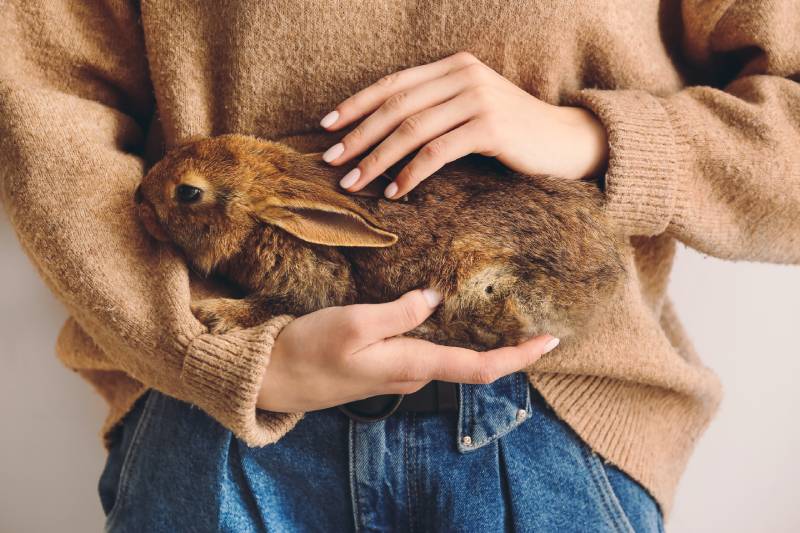
Places You Shouldn’t Pet a Rabbit
Belly and underside
Bunnies are probably more like cats than dogs when it comes to petting. Some animals love any attention they get from their owners and do not have off-limits places, but others don’t tolerate very much touching at all. Again, how a pet is reared plays a significant role in their tolerance. However, remember that instinct plays a major role as well. The rabbit is a prey species. Therefore, they won’t let you touch their underside and belly since these are vulnerable spots. A bunny would have to have a high tolerance and incredible trust in their owner to let them go there.
Feet and back end
The same may apply to the feet. After all, their fast speed is their primary defense against predators. They want to have control of their paws at all times to defend themselves or make a quick getaway (much like cats and dogs do) and will often kick or scramble to get away from you if you touch their feet.
Another sensitive spot for rabbits is the hind end. Sadly, that’s where a carnivore on the hunt may strike first, explaining why you should avoid it.
Flanks
The flanks are a hit-or-miss area. It all depends on the disposition and tolerance of your rabbit. Some animals enjoy it as part of a full-body massage. Others, not so much. However, some gentle strokes and good scratches where it’s harder for your bunny to reach may be ideal.
So, if you accidentally brush one of these “forbidden” areas, move your hands slowly away from your rabbit, speak to them softly to reassure them, and go back to petting them in places where they like being touched.
Rabbit’s Body Language
Understanding a bunny’s body language is essential. Signs that a rabbit is annoyed include grunting, hissing, moving away, growling with head low to the ground and ears flat, and wide eyes if they are scared and anxious. Avoid handling an animal showing discomfort.
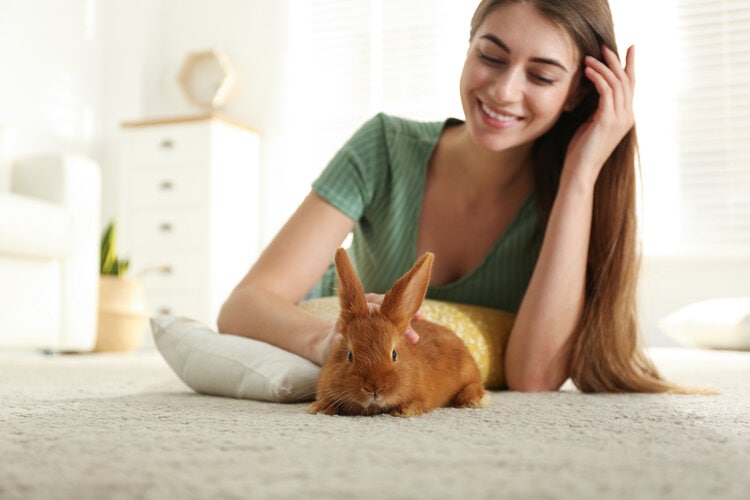
You also shouldn’t try to pick them up, especially if they’re agitated, to prevent injury. Even picking up a relaxed bunny needs to be done with caution, supporting their back end underneath the belly and gently holding all four of their feet against your body, as they may try to jump off.
Being picked up is very unnatural to them and should be done slowly and gradually, with a lot of patience and care, so you can get them used to being picked up when they need to be checked at the vet. It’s worth noting that lagomorphs are prone to stress. However, getting your bunny used to being touched can lessen stress and help you bond with them.
Can I Get My Rabbit Used to Being Petted in These Places?
Like most animals, rabbits can tolerate having their underside and feet touched if they are gently exposed to it over time and rewarded. Sometimes, you or your vet will need to touch your rabbit’s feet, such as for nail clips. This will be done more safely if your rabbit is already used to it being done.
Like cats and dogs, gently touching your rabbit’s feet at an early age can help get them used to it. They will learn that no harm comes to them when their feet are touched, and instead, they get a tasty reward. Also, building up a tolerance to being stroked and held safely under the chest and abdomen will help you when you need to put your rabbit in a carrier, such as during visits to the vet.
 Conclusion
Conclusion
Rabbits are friendly animals that can make excellent pets for older and more responsible children and adults. They’ll enjoy the attention and handling they receive from you to satisfy their social needs. Petting them in areas they feel safe in can help reassure them and keep them calm while getting them used to the human touch and deepening the bond between rabbit and owner. Some rabbits will happily be petted anywhere, others will have a few “safe” zones, and some will have “please don’t touch me there!” zones. The ears, forehead, nose, cheeks, and back are the best places to start. Your bunny will likely learn to enjoy this extra love they get from you, and if they don’t, that’s okay, too. Respect their preferences, go slowly, and listen to what your rabbit is trying to tell you!
Related Read:
- 20 Incredible Facts About Pet Rabbits That You Should Know
- Do Rabbits Have Paw Pads? Evolutionary Facts & Function
Featured Image Credit: Photobac, Shutterstock


